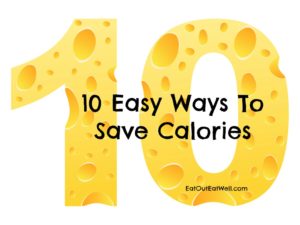
- If you’re full, stop eating and clear your plate right away. If the food hangs around in front of you, you’ll keep picking at it until there’s nothing left. An exception – a study has found that looking at the “carnage” – the leftover bones from barbecued ribs or even the number of empty beer bottles – can serve as an “environmental cue” to stop eating.
- Do you really need to stand in front of the buffet table or kitchen spread? The further away from the food you are the less likely you are to eat it. Don’t sit or stand where you can see the food that’s calling your name. Keep your back to it if you can’t keep distant. There’s just so much control you can exercise before “see it = eat it.” Take a walk or engage someone in an animated conversation. It’s pretty hard to shove food in your mouth when you’re busy talking.
- Before you grab another slice, some chips, mac and cheese, or a cookie — ask yourself if you really want it. Are you hungry? Is it worth the calories? Odds are, the tempting display of food in front of you is visually seductive – and may smell great, too — but you may be reaching out to eat what’s there for reasons not dictated by your stomach, but by your eyes. Have you decided that you want to splurge on something specific? Try deciding what that splurge will be ahead of time and commit to your choice so you don’t find yourself wavering in the face of temptation.
- Drink from a tall, thin glass instead of a short, wide one. You’ll drink 25%-30% less. People given short wide glasses poured 76% more than people who were given tall slender glasses, and they believed that they had poured less. Even experienced bartenders poured more into a short, wide glass.
- Let this be your mantra: no seconds. Choose your food, fill your plate, and that’s it. Keep a running account in your head of how many hors d’ oeuvre you’ve eaten or how many cookies. Keep away from food spreads and open bags of anything to help limit nibbling and noshing.
- Stop eating before you’re full. If you keep eating until your stomach finally feels full you’ll likely end up feeling stuffed when you do stop eating. It takes a little time (around 20 minutes) for your brain to catch up and realize that your stomach is full. A lot of eating is done with your eyes and your eyes love to tell you to try this and to try that.
- Divide your food up into smaller portions and separate them to help avoid overeating. Yale researchers took tubes of potato chips and made each seventh or fourteenth one red. The people who got to the red potato chip “stop signs” ate less than half as many chips as the people without the red chips — and they more accurately estimated how much they’d eaten. Definitely avoid eating from a large open bag — count out your chips, crackers, and pretzels or only eat from a single portion size bag. Who can stop when there’s an open bag of salty, crunchy food right in front of you? It’s amazingly easy to keep mindlessly eating until the bag is empty. A dive to the bottom of a 9-ounce bag of chips (without dip) is 1,260 calories. One serving, about 15 chips, is 140 calories.
- Cut down a little bit, you probably won’t even notice. Have a one scoop cone instead of 2 scoops, a regular portion of French fries instead of a large, a small smoothie instead of a medium. Eat slowly and give your brain time to register the fact that you’ve fed your body some food. You’ll probably be just as satisfied with the smaller portion and you’ll have saved yourself a lot of calories.
- Use a fork and knife instead of your fingers, a teaspoon rather than a tablespoon — anything to slow down the food going into your mouth. Chopsticks can slow you down even more. Chew your food instead of wolfing it down. If you have to work at eating your food – cutting it with a knife, for instance – you’ll eat more mindfully than if you pick food up with your fingers and pop it into your mouth. Before you eat, drink some water, a no- or low-calorie beverage, or some clear soup. The liquids fill up your stomach and leave less room for the high calorie stuff.
- Use a smaller plate. We eat an average of 92% of what we serve ourselves. We pile more food onto larger plates, so a larger plate means we eat more food. A two inch difference in plate diameter—decreasing the plate size to ten inches from 12 inches—would mean a serving that has 22% fewer calories. It’s a smaller serving but not small enough to leave you still hungry and heading back for seconds.

Leave a Reply